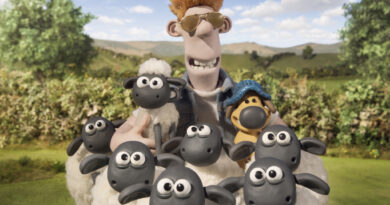Chart 1 explains why Hollywood produces so many sequels
There’s a reason why Hollywood relies so heavily on sequels, it shows them the money.
Of the top 60 films at the box office since 2016 (excluding 2020, when most theaters were closed due to the pandemic) only five can be classified as true original titles, with sequels leading the bulk of the industry’s highest-grossing films.
Analysis provided to Yahoo Finance by box office analytics platform EntTelligence highlights movie studios’ expected reliance on sequels, franchises and well-known intellectual properties to boost ticket sales.
“That’s been pretty much the standard narrative,” explained Sean Robbins, senior analyst at Boxoffice Pro. “There are very few stories left untold. It’s all about reinvention.”
In addition to production pressures? The top 10 films account for, on average, about one in three tickets sold in a given year over the past decade, according to EntTelligence.
This means that the best films drive business, essentially forcing Hollywood to rely on a “tried and true” content strategy rather than taking a chance on an original concept that may not perform.
“It’s purely financial,” Travis Knox, a film producer and professor at Chapman University, told Yahoo Finance.
He continued: “The cost of marketing film releases is enormous, and with Hollywood’s target audience shunning traditional advertising-based television, it is difficult to get the word out.” “Releasing a familiar film is seen as a safer bet.”
Knox added that studios have also become accustomed to “chasing the first week,” explaining: “Movies now live or die from the first weekend, so make a sequel or something that’s already in the ether, whether it’s a Marvel character or based on a hit book,” It will always make it easier to sell tickets from a studio perspective.”
Of course, there are original titles that surprise the upside.
Sony’s “Anyone But You” and Universal’s “M3GAN” are recent examples of high-performing box office titles, with global grosses of more than $200 million and $180 million, respectively. (Note that “Anyone But You” is still in theatrical release, so its global reach could rise further.)
Both films benefited from aggressive marketing campaigns and social media buzz. However, these totals, while impressive, don’t even come close to cracking the top ten.
Barbie’s recipe for success
While original films have struggled to overtake sequels at the top of the food chain at the box office, some of the films with the greatest success are those that create original experiences based on characters people already know, like Barbie.
“The Barbie movie took the whole idea of basing a movie around an IP doll and turned it into a very meaningful story that resonated culturally,” Boxoffice Pro’s Robbins told Yahoo Finance. “It tapped into that familiarity but it was also something the audience could relate to.”
According to EntTelligence, the Greta Gerwig-directed film was the first non-sequel film since 2003’s “Finding Nemo” to sell the most tickets at the box office in a given year.
The biopic has added to the boon in established IP films, as “Bob Marley: One Love” continues to gain momentum after its debut on February 14. Meanwhile, Sam Mendes will direct four different films about the Beatles, each told from the point of view of a different band member. All four films are scheduled for release in 2027.
However, not all familiar stories are successful. Recently, Marvel’s Madame Web was a hit in theaters (and received an even worse reception from the general public) as superhero fatigue spread throughout the industry.
“‘Color Purple,’ ‘Shazam,’ ‘Haunted Mansion’…like it or not, they were all huge disappointments at the box office last year,” Knox added. “Why did the Barbie movie succeed? Besides being a real crowd-pleaser, it had a great marketing campaign that generated a ton of unexpected publicity. They appealed to audiences who hated the toy line but found a movie that still spoke to them.”
Knox said the film’s new and different perspective also appealed to audiences.
“Consumers don’t want to be bored,” he explained. “They don’t want to be talked down to. They want to see something new and exciting. It’s the same ‘Barbie’ story and the way it was told was completely different.”
It also didn’t hurt that the film featured an A-list cast, including Margot Robbie and Ryan Gosling. Star power, in particular, can often act as a driver for films across the board, though Knox noted that there is no “formula” when it comes to box office successes.
“The basic answer is that consumers want something that feels new and familiar at the same time. It’s an impossible scenario,” Robbins added. “It’s not just about making a great movie. It’s not just about having great actors and a great story. It also has to be done very effectively, and sometimes in advance.”
Although Robbins and Knox believe the sequel will continue to dominate, Robbins said this year could be a “stepping stone” when it comes to studios taking more risks at the box office.
“When we see movies like The Fall Guy from Universal at the beginning of the summer, it’s not the typical movie you would expect to start in the summer,” he said. “If this movie does well, it could really change the game.”
Alexandra Canal He is a senior reporter at Yahoo Finance. Follow her on X @allie_canal, linkedin, And email it to alexandra.canal@yahoofinance.com.
Click here for the latest stock market news and in-depth analysis, including stock-moving events
Read the latest financial and business news from Yahoo Finance




